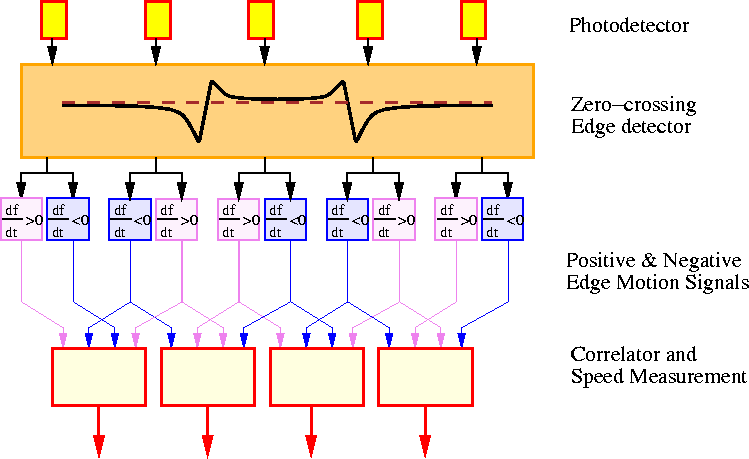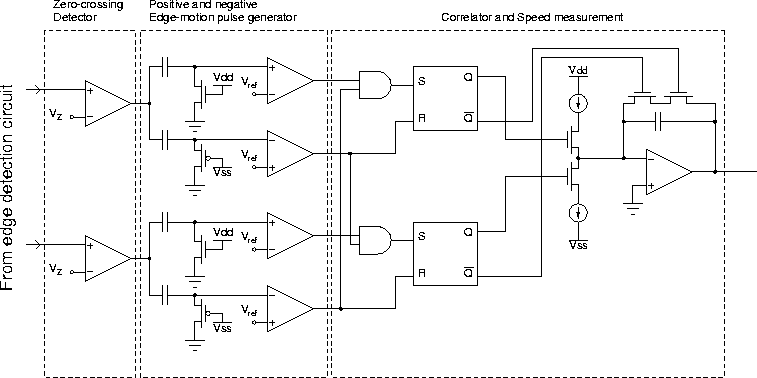Etienne-Cummings' motion detection chip uses a modified Reichardt algorithm [Etienne-Cummings et al. 97b]. In this algorithm, called temporal domain optical flow measurement (TDOFM), motion is detected by locating the zero-crossings and determining their appearance or reappearance. Velocity can be determined by finding the time that an edge disappears at a pixel and then appears at a neighboring poxel. The block diagram of the TDOFM algorithm is illustrated in Figure 3.38.
The input image is originally input to an edge detector circuit by subtracting the image from a spatially smoothed version of the image. The spatial smoothing is performed by a passive resistive network. The output of the edge detector is converted to 1-bit binary signal using a comparator, with its reference point set to the zero level of the edge detector. The binary edges are applied to positive and negative temporal differentiators, which generate pulses on the appearance (positive d/dt) and disappearance (negative d/dt) of an edge. A circuit takes the pulses from two neighbors and generates pulses, whose width indicates the time between the appearance and disappearance of the edge. It also integrates these pulses, and the output represents the velocity of the edge. The schematic diagram of the implemented circuit is shown in Figure 3.39.
Two chips with 1 ![]() 9 and 5
9 and 5 ![]() 5 arrays have been fabricated
in a 2
5 arrays have been fabricated
in a 2 ![]() m CMOS in TINY chips (2.3mm
m CMOS in TINY chips (2.3mm ![]() 2.3mm).
2.3mm).

Figure 3.38: Block diagram of Etienne-Cummings' motion detection chip.

Figure 3.39: Circuit diagram of Etienne-Cummings' motion detection chip.